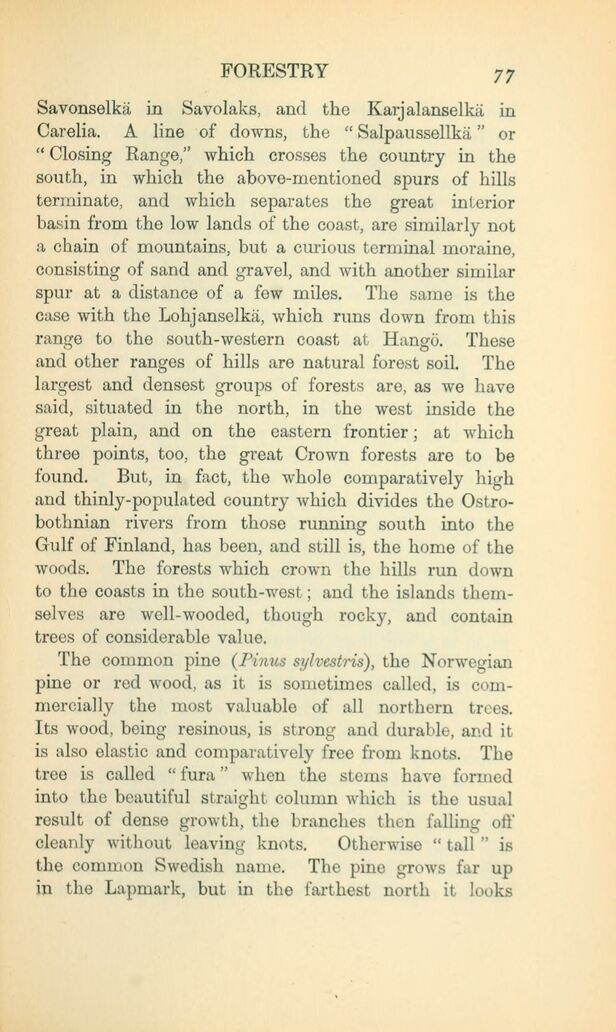
Full resolution (JPEG) - On this page / på denna sida - V. Forestry

<< prev. page << föreg. sida << >> nästa sida >> next page >>
Below is the raw OCR text
from the above scanned image.
Do you see an error? Proofread the page now!
Här nedan syns maskintolkade texten från faksimilbilden ovan.
Ser du något fel? Korrekturläs sidan nu!
This page has been proofread at least once.
(diff)
(history)
Denna sida har korrekturlästs minst en gång.
(skillnad)
(historik)
Savonselkä in Savolaks, and the Karjalanselkä in
Carelia. A line of downs, the “Salpausselkä" or
“Closing Range,” which crosses the country in the
south, in which the above-mentioned spurs of hills
terminate, and which separates the great interior
basin from the low lands of the coast, are similarly not
a chain of mountains, but a curious terminal moraine,
consisting of sand and gravel, and with another similar
spur at a distance of a few miles. The same is the
case with the Lohjanselkä, which runs down from this
range to the south-western coast at Hango. These
and other ranges of hills are natural forest soil. The
largest and densest groups of forests are, as we have
said, situated in the north, in the west inside the
great plain, and on the eastern frontier; at which
three points, too, the great Crown forests are to be
found. But, in fact, the whole comparatively high
and thinly-populated country which divides the
Ostrobothnian rivers from those running south into the
Gulf of Finland, has been, and still is, the home of the
woods. The forests which crown the hills run down
to the coasts in the south-west; and the islands
themselves are well-wooded, though rocky, and contain
trees of considerable value.
The common pine (Pinus sylvestris), the Norwegian
pine or red wood, as it is sometimes called, is
commercially the most valuable of all northern trees.
Its wood, being resinous, is strong and durable, and it
is also elastic and comparatively free from knots. The
tree is called “fura” when the stems have formed
into the beautiful straight column which is the usual
result of dense growth, the branches then falling off
cleanly without leaving knots. Otherwise “tall” is
the common Swedish name. The pine grows far up
in the Lapmark, but in the farthest north it looks
<< prev. page << föreg. sida << >> nästa sida >> next page >>